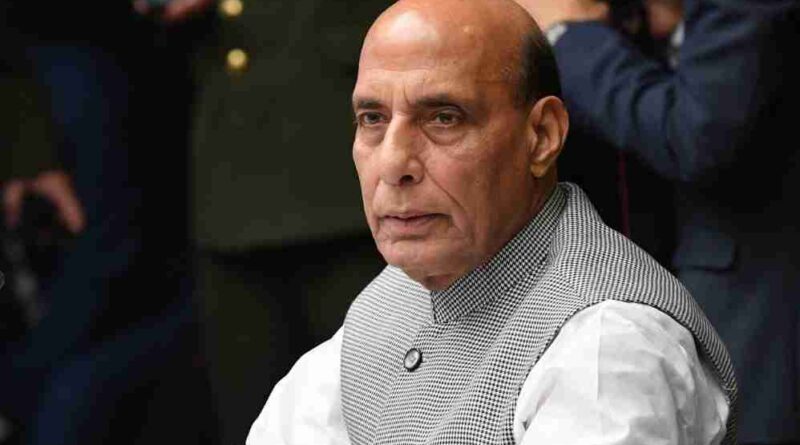India and U.S. Set to Finalize Groundbreaking 10-Year Defense Partnership
In a move that signals deepening trust and strategic alignment, India and the United States are preparing to sign a comprehensive 10-year defense cooperation framework. This upcoming pact reflects a shared vision of a more secure Indo-Pacific region and a recognition that the evolving global security landscape demands a strong and enduring partnership between the world’s largest democracies.
A New Chapter in Strategic Ties
The proposed decade-long defense roadmap isn’t just another bureaucratic agreement—it’s a bold statement. It speaks to how far India-U.S. relations have come, especially in the defense domain, which was once marked by skepticism and caution. Today, both nations stand ready to collaborate more openly and systematically on key security issues, joint exercises, advanced weapons platforms, and regional stability.
This new framework builds on the momentum from previous agreements, such as foundational accords on logistics and communications interoperability. But this time, the focus appears to be on setting clearer long-term objectives and building mechanisms that ensure consistent progress, regardless of political changes in either country.
What’s on the Table?
While official details remain under wraps, the broad contours of the agreement are expected to cover areas such as joint research and development, technology transfer, and increased cooperation in maritime and aerospace security. There is also growing interest in co-producing key military equipment—an area that aligns with India’s ‘Atmanirbhar Bharat’ (self-reliant India) initiative and Washington’s push for secure and resilient supply chains.
Cybersecurity, artificial intelligence in defense systems, and space-based surveillance may also form part of the strategic dialogue. These futuristic capabilities are becoming increasingly central to modern warfare and defense preparedness, and both sides seem keen on being ahead of the curve.
Why Now?
This announcement couldn’t be more timely. With rising tensions in the Indo-Pacific, particularly concerning China’s growing assertiveness, the India-U.S. defense collaboration sends a strong message. It’s not about confrontation, officials insist—it’s about deterrence, stability, and maintaining the balance of power.
Washington sees India as a critical partner in its broader strategy to ensure a free and open Indo-Pacific. For New Delhi, stronger defense ties with the U.S. help diversify its military capabilities, reduce dependence on legacy Russian systems, and gain access to cutting-edge technologies that can reshape its defense posture.
Trust Built Over Time
It’s worth remembering that this deepening trust has taken years to cultivate. From initial hesitation to today’s high-level interoperability, India and the U.S. have grown closer through countless joint exercises—like the Malabar naval drills—and shared threat assessments.
In recent years, the two sides have also established defense and security dialogues at multiple levels, involving not just top brass but also industry, researchers, and policymakers. This ecosystem has nurtured mutual respect and helped align bureaucratic structures that were once seen as obstacles.
Domestic and Global Impact
For India, this agreement has domestic implications as well. By tapping into U.S. technological prowess and defense know-how, Indian firms and defense startups could see a boost in innovation and manufacturing. It also serves as a diplomatic win for New Delhi, showcasing its role as a key global player capable of crafting long-term strategic partnerships.
For the U.S., this partnership strengthens its network of allies in Asia and signals to adversaries that Washington is not retreating but re-engaging in meaningful and constructive ways. The framework also aligns well with U.S. industry interests, potentially opening doors for expanded defense trade and collaborative ventures.
Looking Ahead
A 10-year defense framework isn’t a magic wand—it won’t erase all differences overnight. India’s tradition of strategic autonomy and the U.S.’ global commitments may still create moments of friction. However, what’s emerging is a mature partnership rooted in shared interests and a willingness to navigate differences constructively.
As the world grapples with unpredictable threats—from state actors to cyber warfare and space militarization—this defense pact could become a cornerstone of a new global security architecture. It’s not just about two nations looking out for each other—it’s about shaping the future of international cooperation in an increasingly fragmented world.
In essence, the upcoming India-U.S. defense framework represents more than just defense—it symbolizes a long-term investment in peace, stability, and mutual progress.
Disclaimer
The information and content shared on digitalgithub.com — including articles, blogs, news, guides, and other resources — is intended for general informational and educational purposes only. We do not guarantee the completeness, reliability, or suitability of any information. Always seek the guidance of a qualified professional before making decisions based on the information you read. Use this site at your own risk.

